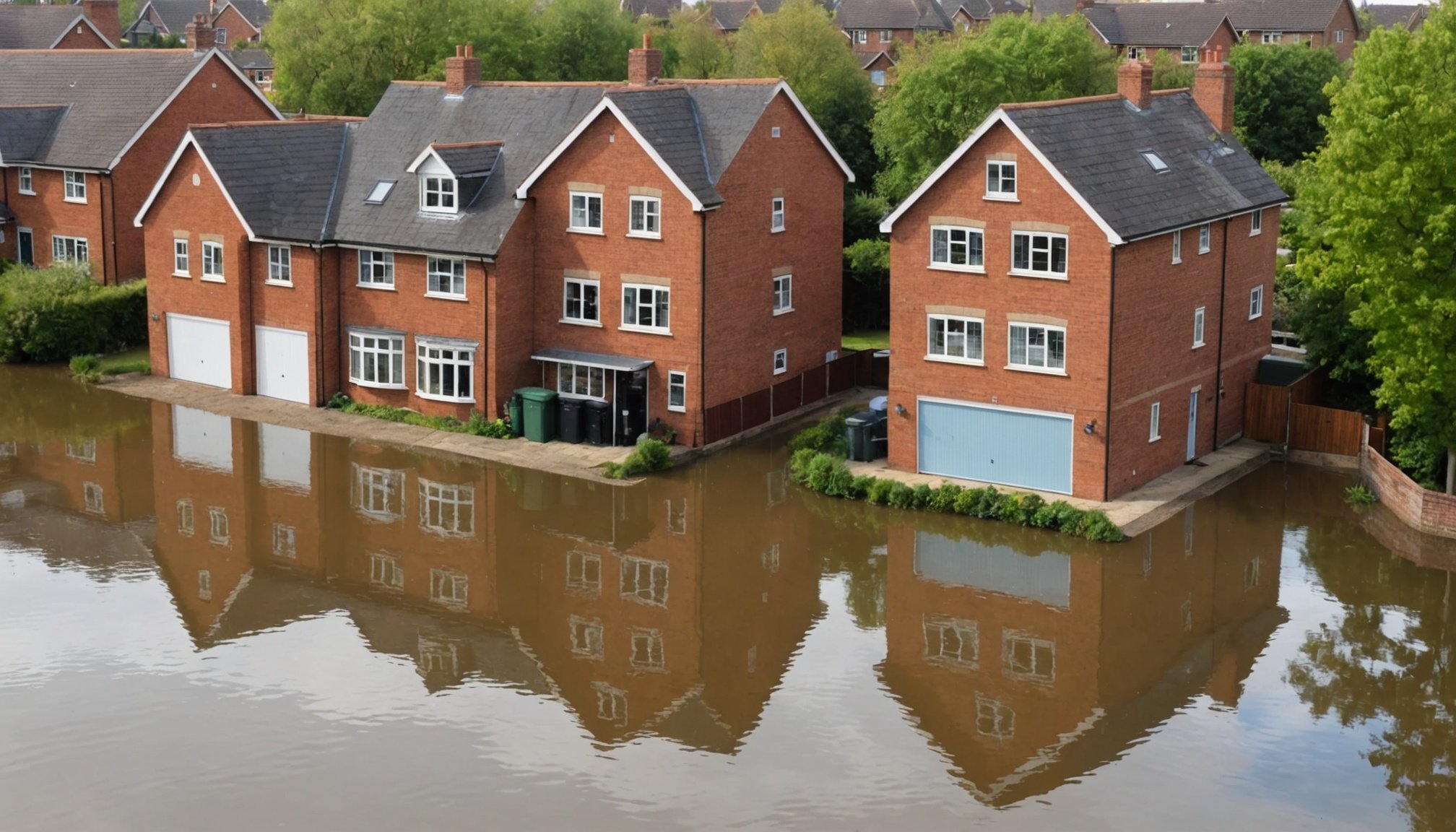Unlock the Benefits of Intelligent Flood Detection Sensors for UK Homes: Your Comprehensive Guide to Advanced Early Warning Systems
Understanding the Need for Advanced Flood Detection
Floods are one of the most devastating natural disasters, causing significant damage to properties, infrastructure, and even loss of life. In the UK, the risk of flooding is a pressing concern, with 6.3 million properties at risk from rivers, the sea, and surface water, as highlighted by the Environment Agency’s latest National Assessment of Flood Risk (NaFRA)[5].
The recent storms in the UK, such as Storm Bert, have underscored the importance of preparedness and the use of advanced technology in flood mitigation. For instance, during Storm Bert, the Met Office’s 48-hour advance warnings were insufficient in some areas, leading to severe flooding and damage[2].
Additional reading : Unlocking the secrets of heritage designation: essential insights on property ownership in wales
How Intelligent Flood Detection Sensors Work
Intelligent flood detection sensors are designed to provide real-time monitoring and early warnings, helping homeowners and communities prepare for and mitigate flood events.
Key Features of Intelligent Flood Detection Sensors
- WiFi and Wireless Connectivity: Sensors like the Shelly Flood can connect to your Wi-Fi network, allowing for remote monitoring and control through smart home apps or voice assistants[1].
- Battery Life: Many of these sensors operate on battery power, with some lasting up to 18 months on a single CR123A battery, ensuring continuous monitoring without the need for wiring[1].
- Temperature Measurement: In addition to detecting water leaks, these sensors can also measure temperature fluctuations, providing a comprehensive picture of the environment[1].
- Real-Time Alerts: Sensors can send instant alerts to your phone or other devices, ensuring you are informed the moment a leak or flood is detected[4].
The Role of Machine Learning in Flood Forecasting
Machine learning is revolutionizing the field of flood forecasting by enabling more accurate and timely predictions.
Also to read : Unlocking the financial benefits of owning property in uk conservation areas: essential insights for homebuyers
Advanced Hydrological Modeling
Research has shown that machine learning models, particularly those based on convolutional neural networks (CNNs) and recurrent neural networks (RNNs), can accurately predict flood depths and water accumulation areas. These models use high-resolution local patches and contextual terrain information to simulate urban pluvial flood maps, outperforming traditional hydrodynamic models in terms of speed and accuracy[3].
Example: Urban Flood Mapping in Zurich and Singapore
A study in Zurich, Lucerne, and Singapore demonstrated that a context-aware data-driven model could faithfully represent flood depths for various rainfall events. This model, which combines different types of neural networks, was able to adapt to new terrains with just a single rainfall event, showcasing its versatility and effectiveness[3].
Early Warning Systems: The Key to Mitigating Flood Damage
Early warning systems are crucial in reducing the impact of floods on communities and infrastructure.
Benefits of Early Warning Systems
- Reduced Property Damage: With sufficient advance warnings, communities can implement flood action plans, reducing economic losses and saving lives[2].
- Protection of Critical Infrastructure: Early warnings can help prevent damage to roads, bridges, and utilities, which are critical for community functioning[2].
- Environmental Impact: By minimizing the duration and severity of floods, early warning systems can also reduce the environmental impact of flooding[2].
Case Study: Previsico’s Model During Storm Bert
During Storm Bert, Previsico’s early warning system delivered 152 surface flooding warnings, giving people time to prepare. The system showed river levels rising by over 3 meters in some parts, demonstrating its effectiveness in real-time flood monitoring and prediction[2].
Practical Insights and Actionable Advice
Choosing the Right Sensor
When selecting a flood detection sensor, consider the following factors:
- Connectivity: Ensure the sensor can connect to your home network or via cellular networks for uninterrupted monitoring[4].
- Battery Life: Opt for sensors with long battery life to minimize maintenance[1].
- Additional Features: Look for sensors that offer temperature measurement and other environmental monitoring capabilities[1].
Integrating Sensors with Home Automation
Integrate your flood detection sensors with home automation systems to automate flood protection measures. For example, the Shelly Flood can work with other Shelly devices to cut power to sockets exposed to water or temporarily shut off the water supply[1].
Community Preparedness
- Flood Action Plans: Develop and regularly update flood action plans at the community level to ensure everyone knows what to do in case of a flood warning[2].
- Public Education: Educate the public on the importance of early warning systems and how to respond to flood alerts[2].
Table: Comparison of Advanced Flood Detection Sensors
| Sensor Model | Connectivity | Battery Life | Additional Features | Real-Time Alerts |
|---|---|---|---|---|
| Shelly Flood | WiFi | Up to 18 months | Temperature measurement, embedded web server | Yes |
| Alert Labs | Cellular network | Battery backup | AI-powered analysis, water shut-off valves | Yes |
| Previsico’s Sensor | Wireless | Not specified | Real-time river level monitoring | Yes |
Quotes and Expert Insights
- “Improved technology can now play a more pivotal role in improving flood forecasting, enhancing the accuracy of predictions and subsequent flood mitigation activities.” – [Insurance Edge][2]
- “By leveraging a range of new data sources, including IoT sensors, rainfall, river levels, and others, we can get a much more precise picture to understand flood risks.” – [Insurance Edge][2]
- “The use of machine learning for fast flood mapping has been given growing attention in recent years. Models based on convolutional layers have demonstrated the potential to emulate urban pluvial flood maps.” – [Hydrology and Earth System Sciences][3]
Intelligent flood detection sensors and advanced early warning systems are indispensable tools in the fight against flood-related damages. By leveraging machine learning, IoT sensors, and real-time monitoring, these systems can provide critical early warnings, helping communities prepare and mitigate the impact of floods.
As the UK continues to face increasing flood risks, the adoption of these technologies is not just beneficial but essential. Whether you are a homeowner, a business owner, or part of a community at risk, understanding and utilizing these advanced systems can make a significant difference in disaster management and flood resilience.
In the words of the Environment Agency, “The data will be used by the government, Environment Agency and local communities to plan for and improve flood resilience in areas at risk.” By embracing these technologies, we can create safer, more resilient communities ready to face the challenges of flooding head-on.











